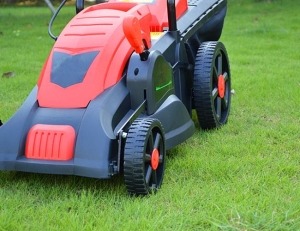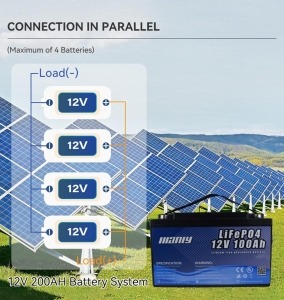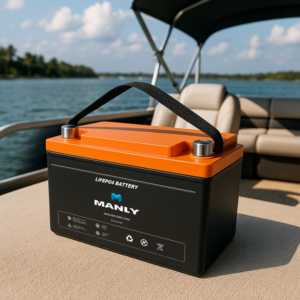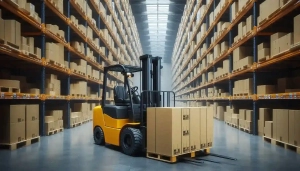What Is a Trickle Charger & Why Every Battery Needs One
Table of Contents
- What Is a Trickle Charger & Why Every Battery Needs One
- How a Trickle Charger Works (and Why It’s Brilliant)
- Why You’ll Love Having a Trickle Charger in Your Toolkit
- When and Where to Use a Trickle Charger
- Trickle Charger vs. Regular Battery Charger
- Key Features to Look for in a Trickle Charger
- Expert Tips and Best Practices
- Conclusion
- FAQ
- Hot Research
- Learn More About Battery
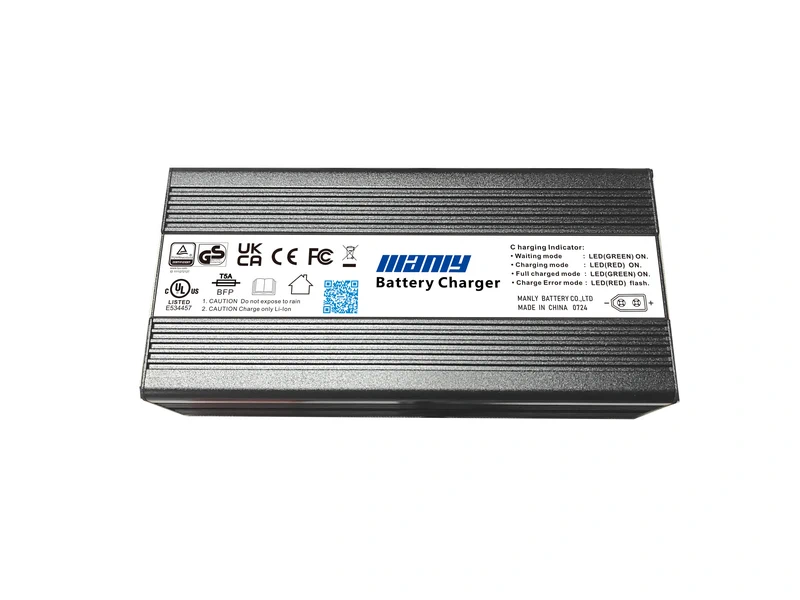
How a Trickle Charger Works (and Why It’s Brilliant)
So, how does this clever little box keep your battery humming quietly in storage? Simple: slow, steady power that matches your battery’s natural self-discharge.All batteries lose charge over time—even just sitting on a shelf. Lead-acid batteries can drop 10–15% a month. Lithium batteries do better, but they’re not immune. That slow decline might not kill your battery overnight, but let it go long enough, and you're looking at sulfation, voltage drops, and sometimes irreversible damage.A trickle charger offsets that loss by supplying just enough current—typically between 1 and 3 amps—to keep things balanced—not too much, not too little, just right.Here’s where it gets a little technical, but stick with me:- Bulk Stage: This is the “fill ‘er up” phase. The battery absorbs the majority of the charge here.
- Absorption Stage: Things slow down. As the battery nears full, the charger reduces the current to avoid overheating.
- Float Stage: The battery's complete, but it still needs a tiny push now and then. A smart trickle charger switches to float mode, maintaining 100% without pushing the battery past its limit.
Why You’ll Love Having a Trickle Charger in Your Toolkit
1. It Helps Your Battery Live Longer
Let’s face it: batteries aren’t cheap. So why not protect your investment? A trickle charger can add months—or even years—to your battery’s lifespan. It prevents deep discharges, which lead to sulfation (those nasty lead sulfate crystals that choke your battery’s performance). The less your battery has to play catch-up, the healthier it stays.2. It Fights Off Cold Weather Damage
Cold weather and low batteries? Not a good combo. A battery that’s not fully charged is way more likely to freeze in winter. And when that happens, the internal structure can crack—bye-bye battery.A trickle charger keeps the charge level high enough to fight off freezing. So, even if your RV or boat is hibernating in a cold garage, you’ve got one less thing to worry about.3. It’s Ready When You Are
Picture this: It’s the first warm Saturday in spring. You pull your motorcycle out of storage, throw on your helmet, turn the key… and it starts right up. There are no jumper cables. No four-letter words. That’s the magic of a trickle charger—your battery is always ready to roll.This is especially true for folks who rely on batteries for work, such as solar backups, generators, and security systems. Downtime is expensive. Keep those batteries charged, and you stay one step ahead.4. Built-In Safety = Peace of Mind
Today’s smart trickle chargers are packed with features that protect both you and your battery:- Reverse polarity protection (just in case you mix up your terminals)
- Overcharge protection (shuts off or shifts to float mode automatically)
- Spark-resistant design
- Temperature sensors on some models
When and Where to Use a Trickle Charger
When to use a trickle charger? It’s perfect for any battery sitting idle for weeks—or even months—at a time. Think of it as your battery’s babysitter, quietly keeping things alive while you’re off the clock.1. Seasonal Vehicles and Storage Champs
Let’s face it: your RV, boat, motorcycle, or snowmobile probably isn’t hitting the road (or water) every weekend. That downtime can damage your batteries, especially in cold garages or humid sheds.Enter the trickle charger.By supplying a low, steady current (typically 1–3 amps), these handy devices keep your battery topped off and ready to roll—no more dead starts when spring hits. Whether tucking away your boat for the winter or parking your classic car under a cover, a trickle charger helps you avoid the pain of a fully drained battery.Here’s where they shine:- RVs and camper vans in off-season storage
- Boats at the marina or on land
- Golf carts parked for winter
- ATVs and motorcycles in the garage
- Standby generators that don’t run daily
2. Lead-Acid vs. Lithium: Battery Chemistry Matters
Not all batteries age the same—and they don’t all need the same maintenance strategy.Lead-acid batteries, especially flooded or AGM types, can lose 10–15% of their charge every month just sitting there. If they drop too low, sulfation decreases performance and kills long-term health. That’s where a trickle charger shines: it keeps the voltage steady, preventing deep discharge and sulfation.Lithium batteries (especially LiFePO₄ types like those from MANLY Battery) are a whole different beast. These modern cells self-discharge much slower—around 2–3% per month—and don’t suffer from sulfation like their lead-acid cousins. Still, if your lithium batteries power seasonal equipment or backup systems, a trickle charger with smart controls ensures they’re ready to go when needed.Pro tip: Always use a lithium-compatible charger for lithium batteries. Chargers from MANLY Battery are designed to safely maintain LiFePO4 chemistry without triggering BMS protection or degrading cells.3. When Maintenance Charging Is a Must
Some batteries can’t afford to sit idle. Whether it’s your security system, emergency lighting, or a backup power setup, you need them fully juiced at all times. Maintenance charging isn’t just helpful in these scenarios—it’s non-negotiable.A trickle charger helps ensure:- Emergency equipment works when needed
- Standby systems stay operational
- Battery life is maximized with zero over-discharge

Trickle Charger vs. Regular Battery Charger
So, what’s the difference between a trickle charger and a regular battery charger? Think marathon versus sprint. Both reach the finish line but move at very different speeds and serve very different goals.1. Slow and Steady Wins the Storage Game
A trickle charger delivers a low, continuous charge—just enough to keep the battery topped off without stressing it. It’s the perfect match for storage and long-term maintenance.By contrast, a regular charger blasts power into your battery fast, often delivering 10 amps or more. It’s ideal when you need a quick top-up before heading out, but it's not great for long-term connections. Leave it too long, and you might overcharge your battery—especially older lead-acid models.Let’s break it down:| Charger Type | Charging Speed | Best For |
|---|---|---|
| Trickle Charger | Slow (1–3A) | Storage, maintenance, long-term readiness |
| Regular Charger | Fast (10A+) | Immediate charging, fast recovery from deep discharge |
2. Matching the Tool to the Task
If your battery is dead and you need to revive it quickly, grab a regular charger. But if your battery is just sitting idle, waiting for its next adventure, the trickle charger earns its keep.Think of it like this:- Use a regular charger when you need speed.
- Use a trickle charger when you need consistency and peace of mind.
3. Safety First: Why Smart Charging Matters
Overcharging can destroy a battery—literally. It can lead to overheating, off-gassing, and even explosions in sealed units. This is especially true for lead-acid batteries, where boiling electrolytes and sulfation can turn your investment into a paperweight.Here’s where modern trickle chargers shine. Innovative models use microprocessors to adjust current as the battery fills up, preventing dangerous spikes and extending battery life. Automatic shut-off, thermal regulation, and reverse polarity protection should be the standard—not the exception.So yes, while a regular charger might get you going faster, a trickle charger keeps your battery safer for the long haul.Key Features to Look for in a Trickle Charger
All trickle chargers are not created equal. The right one can save you headaches, extend battery life, and even prevent fire hazards. So, what should you look for?1. Smart Charging Technology
Old-school chargers dump current into your battery. New smart chargers? They listen first.Modern trickle chargers come equipped with microprocessors—tiny brains that monitor voltage, temperature, and charge level in real-time. This means they can:- Switch between charging phases (bulk, absorption, float)
- Automatically stop when the battery is full
- Maintain voltage without overcharging
2. Battery Compatibility: One Size Doesn’t Fit All
Don’t assume all chargers are plug-and-play. If you’ve got:- For a lead-acid battery (flooded, AGM, or gel), you'll need a basic trickle charger with float mode.
- For a lithium battery (especially LiFePO₄ from brands like MANLY Battery), you’ll need a charger designed for lithium chemistry.
3. Built-In Safety and User-Friendly Design
If you're dealing with batteries, safety matters. Always.Here’s what you should demand from your trickle charger:- Reverse polarity protection (in case you mix up the cables)
- Short circuit and surge protection
- Fuse protection for your charger and battery
- LED indicators or a digital screen to show charge progress
- Weather-resistant casing (for outdoor or marine use)
4. Why Brand Quality Matters
Cheap chargers might save you a few bucks upfront—but they can cost you a battery down the line. Like those offered by MANLY Battery, quality battery chargers are built for commercial use and tested for safety, durability, and cross-compatibility with modern lithium systems.When storing equipment worth thousands, it’s worth investing in the correct charger to protect it.Expert Tips and Best Practices
Keeping your battery in top shape isn’t just about buying the correct trickle charger and knowing how to use it. Let’s break down the pro-level habits that separate the battery-savvy from the stranded-on-the-side-of-the-road crowd.1. Install It Right, Check It Often
A trickle charger maybe your battery’s best friend during the off-season, but only if you install it properly. Here’s a simple cheat sheet for a clean, safe setup:- Step 1: Connect the positive (red) clamp to the battery’s positive terminal.
- Step 2: Attach the negative (black) clamp to the negative terminal—or better yet, to the vehicle’s frame for added safety.
- Step 3: Plug in the charger to power.
2. Avoid Rookie Mistakes
Even the most well-meaning battery owner can slip up. So here’s what to steer clear of:- Overcharging: Basic trickle chargers that lack smart tech may keep charging even when your battery is full. That’s a no-no. It leads to heat buildup, off-gassing, and, worst cases, battery damage. A “smart” or “float” charger with automatic shutoff solves this instantly.
- Reversed polarity: It is essential to acknowledge that improperly connecting the red and black clamps is a standard error that can lead to significant consequences. Incorrect attachment may damage the charger or, in more severe cases, pose a safety hazard. Most modern units (like those from MANLY Battery) include reverse polarity protection but always double-check.
- Using the wrong charger type: A tiny charger won’t cut it for large deep-cycle batteries, while a heavy-duty charger might fry a minor AGM. Match your charger’s amperage output to about 10% of your battery’s capacity. For example, a 100Ah battery? Stick with a 10A or less trickle charger.
3. Safety Tips for Long-Term Storage
If your battery’s going into hibernation—say, over winter in a cold garage—you’ve got to think long-term. Follow these guidelines to keep things safe and functional:- Ventilation is key: Lead-acid batteries, especially flooded ones, release hydrogen gas. Store them in a well-ventilated space, never sealed containers.
- Use fuses and surge protection: The best trickle chargers come with inline or surge guards. These aren’t bells and whistles—they’re insurance.
- Temperature awareness: Extreme cold slows chemical reactions, which can cause even a fully charged battery to lose performance. Smart chargers with temperature compensation adapt automatically, preventing undercharging or overcharging.

